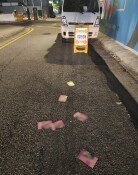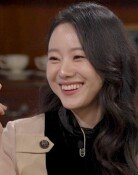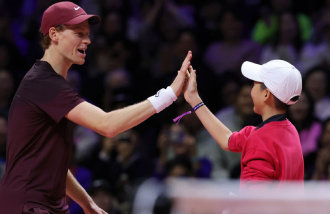Worlds Eyes Turning Toward Yasukuni
Worlds Eyes Turning Toward Yasukuni
Posted June. 13, 2006 03:08,
The worlds attention is shifting toward the Yasukuni issue, the shrine where top-class war criminals are enshrined. Criticism from the international community is growing toward Japanese Prime Minister Junichiro Koizumi pushing forward his visit to the Yasukuni Shrine, despite the opposition from countries such as Korea and China that suffered from Japans invasion. Prime Minister Koizumis excuse that it is a heart issue and Japans domestic issue all appears lame. The Yasukuni issue has turned into a point of contention for the upcoming September Liberal Democratic Party election to select a new head, which is virtually an election to pick the next prime minister.
Between Civilization and Barbarity
Civic groups have come forward to show the irrationality of Yasukuni to the rational minds of the world.
On July 20 and 21 an international academic convention titled, Seeing Yasukuni through the Worlds Eyes will be held in Seoul. Twenty-three scholars from five different countries will review the Japanese prime minister and senior officials visit to the Yasukuni Shrine through the perspective of world history, and plan to provide a model to rightfully overcome past history.
Japanese scholars to attend the convention include University of Tokyo philosophy professor Tetsuya Takahashi, lawyer Masatoshi Uchida, and Minoru Tsuji, secretary general of a group arguing the unconstitutionality of Yasukuni shrine visits. Other experts such as Taiwanese lawmaker Gaojin Sumei, Australian National University professor Gavan McCormack, and Connecticut College History Professor Alexis Dudden will also attend the convention.
Secretary Kim Eun-sik of the Joint Action Group to Oppose Yasukuni, who is also preparing the convention, explained, At a glance, the Yasukuni Shrine seems as it belongs to the civilized world, but at close sight, it reveals the barbarity of Japans imperialism and that is what we plan to focus on.
This academic convention will set the groundwork for the rally Candlelight of Peace to the Darkness of Yasukuni Shrine which will be held from August 11 to 15 in Tokyo.
Tens of thousands are planned to join this rally, led by civic groups in Korea, Taiwan and Japan, and will also include cultural events as well as protests.
U.S. is Quietly Watching
The U.S. administration under President George W. Bush has been officially silent on the issue of Yasukuni Shrine visit. That is one of the reasons why Prime Minister Koizumi has ignored protests from Korea and China saying, If relations between the U.S. and Japan are good, relations with China will naturally be good.
Nevertheless, recently, U.S. House International Relations Committee Chairman Henry Hyde, former U.S. Defense Deputy Assistant Secretary for East Asia and Pacific Affairs Kurt Campbell, as well as U.N. Secretary General Kofi Annan criticized or expressed concern over the Japanese prime minister`s visit to Yasukuni, weakening his position.
Kent Calder, director of the Reischauer Center for East Asian Studies, pointed out, If Americans know the true nature of the Yasukuni Shrine, their protests will become bigger. The U.S. is concerned that if Japan is alienated in Asia, it will bring negative impact to Asian diplomacy.
The Basic Solution?
The current controversy regarding Yasukuni Shrine is about halting the prime ministers visit and removing the tablets of class A war criminals. As a matter of fact, the next prime minister might stop visiting the shrine or remove the tablets of war criminals in order to avoid Japans diplomatic isolation. But will the Yasukuni issue be solved then?
Ritsumeikan Asia Pacific University Korea Studies Center Director Seo Seung argued to remove Korean and Taiwanese victim tablets from the shrine, return war artifacts at the war museum in the Yasukuni Shrine seized from Korea and China to its owners, and stop the worship of the leaders of invasion as gods.
Young-A Soh sya@donga.com





![반찬통 착색 고민 끝…‘두부용기’ 버리지 말고 이렇게 쓰세요 [알쓸톡]](https://dimg.donga.com/c/138/175/90/1/wps/NEWS/IMAGE/2026/01/09/133126593.3.png)

